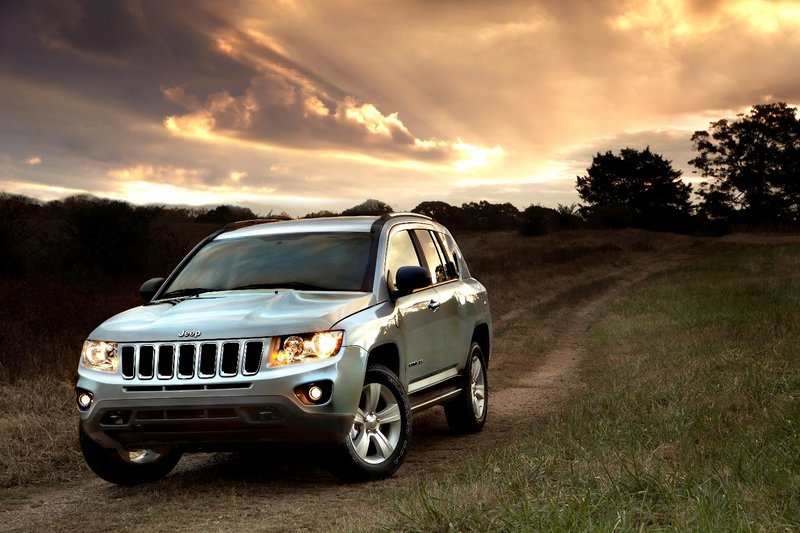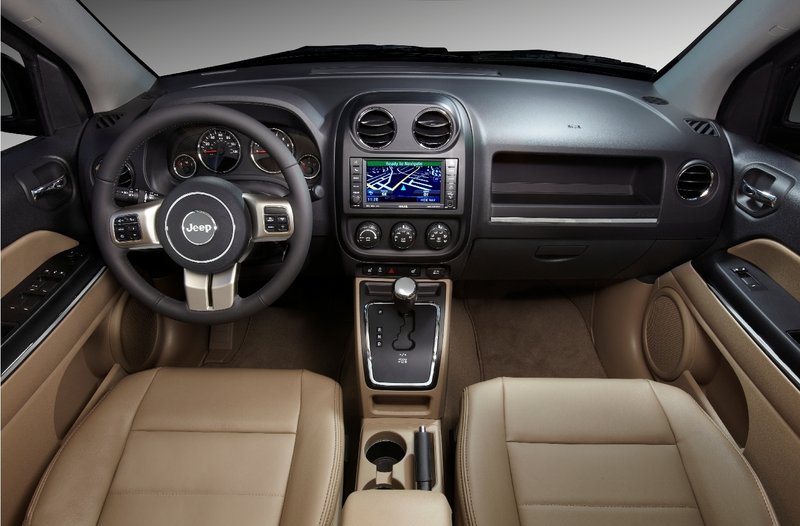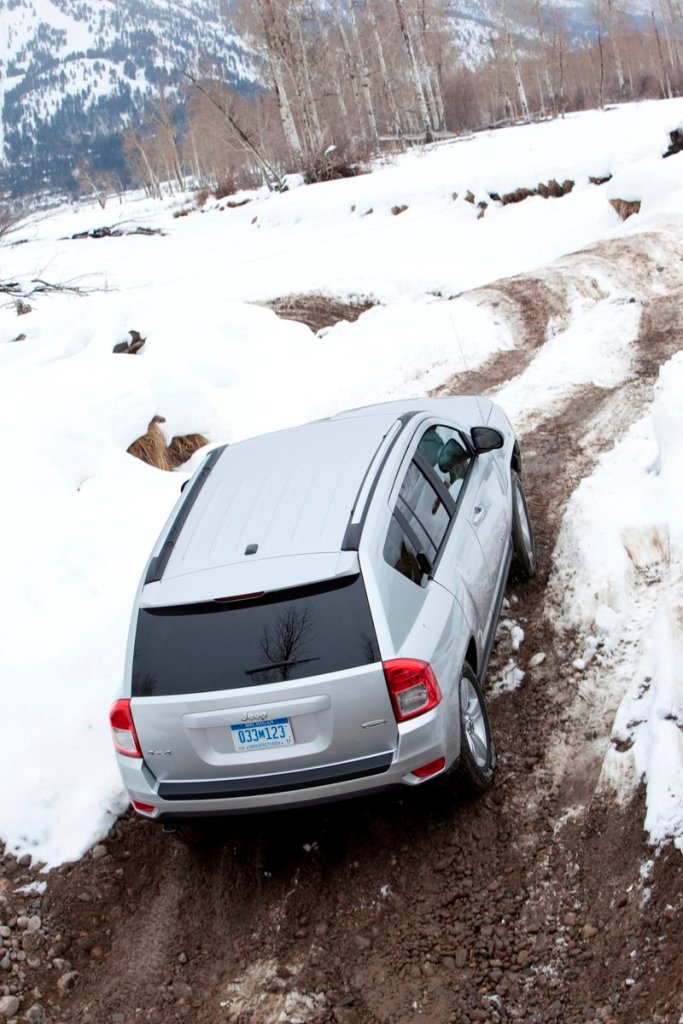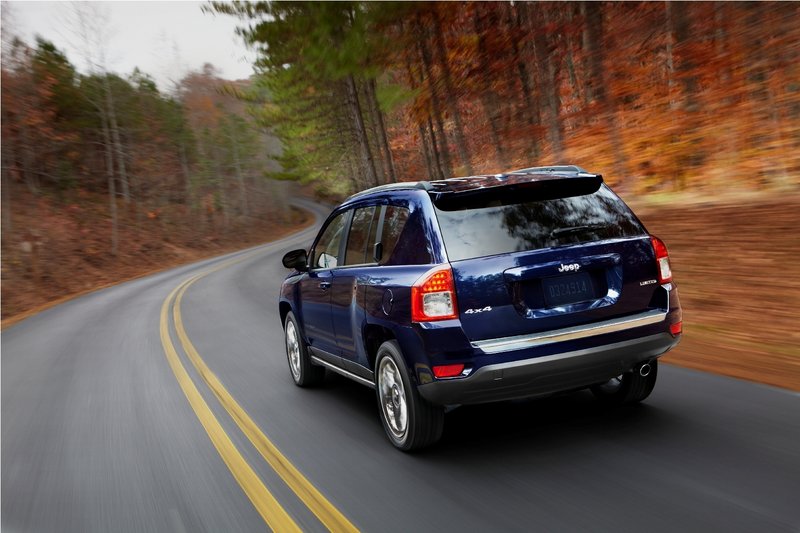As any Boy Scout can tell you, a compass is intended to point you in the right direction. But until now, Jeep’s Compass has seemed lost since it was introduced in 2006.
I’m not clear what the marketing plan was for Compass, but I’m pretty sure it wasn’t based on selling 15,900 vehicles a year. That’s how many Compasses Jeep sold in 2010, which was a great year compared with 2009. According to Chrysler LLC’s sales figures, it sold only 11,739 Compasses that year.
Chrysler’s bankruptcy may be partly responsible for such bleak numbers. Although the company now seems to be on firm financial footing, Jeep’s future was uncertain for most of Compass’ lifespan. With so many appealing alternatives, why buy a model that might become an orphan?
Especially one that seemed to have little going for it. The original Compass was homely, and it lacked the true off-road capabilities for which Jeeps are known. Consumers who wanted a small Jeep gravitated toward the more rugged (and rugged-looking) Patriot, which shares a platform with Compass.
Jeep sold nearly 40,000 Patriots last year.
Based on looks alone, the 2011 Compass should have that kind of sales success. Jeep has turned a hog into a hottie by completely redesigning Compass from the windshield forward and turning it into mini version of the dazzling new Grand Cherokee.
Other cosmetic changes — such as new lower body cladding, rear fascia, spoiler and LED taillights — help turn Compass into a very stylish compact crossover.
That probably would have been enough for Compass to enjoy a major sales bump, so credit parent company Chrysler for not stopping there. It admirably addressed several other areas in which critics had deemed Compass deficient: Interior accommodations and noise levels, handling, and off-road capabilities.
For the first time since it debuted, Compass can now be configured to earn Jeep’s “Trail Rated” endorsement. This is Jeep’s subjective assessment of various factors that go into making a vehicle off-road-worthy.
Turning Compass into a “Trail Rated” Jeep requires nothing more than ordering the new “Freedom Drive II Off-Road Package.” This includes a new continuously variable transaxle with 19:1 low-range, off-road gearing, aluminum wheels with 17-inch all-terrain tires, a full-size spare tire, skid plates, tow hooks, and fog lamps.
The Freedom Drive II package provides an inch more ground clearance than base Compass models.
It is one of two all-wheel drive systems offered on the Compass. “Freedom Drive I” is an active all-wheel drive system not intended for serious off-roading. It does, however, include a locking center differential for part-time use in deep snow, sand or mud.
Front-wheel drive is standard on all three Compass trim levels. It gets paired with a five-speed manual transmission on the base model and to a continuously variable transaxle on the Latitude and Limited trims.
The Limited also comes with a 2.4-liter, in-line four-cylinder engine that Jeep says will deliver up to 172 horsepower and 165 pounds-feet of torque. That engine is optional on base and Latitude models, which start out with a 2.0-liter four-cylinder rated at 158-horsepower and 141 pounds-feet of torque.
Based on the performance of my Compass Latitude test vehicle, I’m glad it was equipped with the optional engine. It took around nine seconds to hit 60 mph. Highway passing power is nothing more than adequate.
I don’t think I would have been happy driving the 3,250-pound, all-wheel drive Compass with 14 fewer horsepower and 24 less pounds-feet of torque available.
But the Compass test car was peppy enough around town, and except for the excessive whirring of its CVT during full-throttle acceleration, its powertrain seems fairly refined.
That’s true of the Compass in general, which is pretty smooth and quiet both in town and on the highway. One of the major upgrades for 2011 was the addition of sound-deadening panels in several places, and it paid dividends.
So did interior upgrades, which include padded door panel tops and split folding rear seatbacks. The Compass’ rear seat and cargo compartment are too cramped for my family’s general needs, but the interior is otherwise not a bad place to spend a half-hour compute or even several hours on the highway.
I also was impressed with upgrades to the Compass’ suspension system. Firmer springs and shocks and a beefier rear anti-sway bar give the Compass a sporty feel that makes it more fun to drive on paved roads and easier to control off-road.
In general, I enjoyed spending time with the 2011 Compass. I would have enjoyed the time more if the Compass had a larger interior and got better highway mileage (Freedom Drive II gets five fewer mpg than a 4WD Compass with five-speed manual).
But I’m nevertheless impressed with the changes Jeep made to finally get its Compass pointed in the right direction.
Scott Wasser is executive editor of MaineToday Media. He writes a weekly auto column for the Sunday Telegram and other newspapers. He can be reached at:
swasser@pressherald.com.
Send questions/comments to the editors.






Comments are no longer available on this story